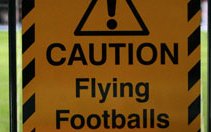An EU study into the training of young players published last month supported the UEFA quota system of home-grown players defining these as players, of any nationality, trained within a national association boundaries for 3 years between the ages of 15 and 21. The quota system applies to UEFA competitions and completes its phased introduction with next season`s competitions culminating in the requirement that 8 home grown players (of which 4 must have been trained at the club) are included in a 25-man squad.
Part one of the EU study report has some interesting observations when comparing the training of nationals in different European countries and within different leagues. While it is true that English clubs do currently have the lowest percentage of nationals appearing in the PL at an average 45% it isn`t that dramatically different, given the financial attraction, from Portugal, with it`s reliance on Brazilian imports, at 51% or even Germany at 53%. At the same time the percentage of home grown players trained in the region is higher in the PL at 48.4% compared to 44.5% in Portugal.
The report is careful not to allow too many direct comparisons from one club to another and the listings are not full but even so some interesting facts emerge about Arsenals investment in training players. The first statistic that caught my eye is that the image of Arsenal as a training ground for non-national players to a greater extent than other clubs is incorrect. Figures shown in the report for last season show that at Arsenal just 21.6% of the players training between the ages of 15 -18 were non-nationals. This was not a full list but even so, compared to 31.7% at Manchester United and 50% at Aston Villa with Manchester City, Blackburn and Reading also having greater percentages of non-national trainees this figure is not particularly high. The figures included in this report also show that Arsenal has the highest percentage of home-grown players on their playing roster at 75.7% compared to the PL average of 48%.
The other statistic meriting notice was the amount spent on training young players. The average spend in the PL is ?3m per club. Arsenal comfortably exceed this at ?3.76m with Man Utd., at ?2.82m. The conclusion that can be drawn from this is that not only are Arsenal training more national players, alongside non- national players, we are spending more on them. Maybe that`s a factor in players like Aaron Ramsey deciding where he would receive the best footballing education.
The report also details a number of other interesting comparisons showing for example that France leads Europe in club spending on developing players which may explain the success they have had in exporting players to other leagues.
Uefa is pushing to extend the 8 from 25 rule to domestic competitions. Lord Triesman has recently made noises about adopting such a rule for the FA Cup with the probability that the PL and other European leagues would also eventually adopt it. From the limited data available from this report it does seem that Arsenal have cut their cloth pretty well in order to comply if and when such a move is ever implemented.
Share this article

